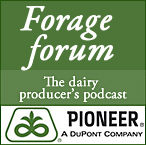 The Grafton Village Cheese Co. is showing its support of local dairy farmers by paying them a special premium to help with the record low milk prices they are experiencing. Grafton Village Cheese will pay farmers an additional premium based on the butterfat, protein and somatic cell content of the milk, according to a press release announcing the new policy.
The Grafton Village Cheese Co. is showing its support of local dairy farmers by paying them a special premium to help with the record low milk prices they are experiencing. Grafton Village Cheese will pay farmers an additional premium based on the butterfat, protein and somatic cell content of the milk, according to a press release announcing the new policy.
All of the milk used for Grafton Village Cheese, which operates two cheese factories, is from Vermont family farms, located primarily in southern and central Vermont.
“Anytime the customer steps up and tries to assist the farmers, it’s a big deal,” said Doug DiMento, spokesman for Agri-Mark, one of the cooperatives that will benefit from Grafton Village Cheese’s new policy. “Grafton is paying over and above what they have to pay. It’s very rare. Most companies want to pay the bare minimum.”
The other cooperative is Dairy Marketing Services.
The company already pays significant quality premiums and handling costs for its milk to its co-ops, stated the press release. This new initiative is an additional premium that will be mailed directly to the farmers.
The price dairy farmers are getting for milk this year is the lowest it has been since the 1970s, said DiMento. The cost of producing milk is about $18 per 100 pounds, he said, but farmers are only receiving about $11.
“It’s really devastatingly low,” he said. “Nobody can take prices this low.” It’s important for Grafton Village Cheese to help farmers stay afloat, said DiMento, because it keeps high-quality milk flowing to Grafton’s cheese factories.
“As a high quality Vermont cheddar cheese producer, we depend upon milk from Vermont dairy farms, and we are very concerned about the viability of our Vermont dairy farmers at a time of extremely low milk prices,” said Adam Mueller, president of Grafton Village Cheese Co. “Consequently, we are working with our milk suppliers to provide farmers in southern and central Vermont an additional premium for the milk they provide to our Grafton Village Cheese plants in Grafton and Brattleboro.”
Spring is the worst time for dairy farmers to see a reduction in prices because they are making investments in production such as getting their fields ready, planting crops, buying fertilizer, feed and fuel and paying their labor force, said DiMento.
One reason why prices have gone down, he said, is that export demand has dropped. Grafton’s promise to pay more than the current market price will help farmers get through the spring and summer.

 In this edition of the Pioneer Forage Forum podcast, Bill Ramsey, Pioneer livestock information manager, discusses several ways to measure feed quality performance. Ramsey looks at three questions producers should consider when evaluating the nutritional value of their feed. Some ways to measure feed value include, NIR on choppers and the physical makeup of the silage.
In this edition of the Pioneer Forage Forum podcast, Bill Ramsey, Pioneer livestock information manager, discusses several ways to measure feed quality performance. Ramsey looks at three questions producers should consider when evaluating the nutritional value of their feed. Some ways to measure feed value include, NIR on choppers and the physical makeup of the silage.
 When you’re loading the trailer full of cows or calves, do you ever think about how it could impact the quality of the end product, beef? Overloading a trailer can cause internal and external injuries, the most common being muscle bruising. The Beef Quality Assurance Program passes out friendly reminders for proper trailer protocol when moving livestock, and I was given a bumper sticker recently that serves as an excellent guide for knowing how many animals belong in the trailer. This is a photo of my sisters and I outside of our stock trailer minutes before we headed down the road with a load of cattle. I know it’s more convenient to load the trailer plumb full, but BQA reminds us that best animal handling practices ensure a quality end product and a more pleasant ride for the animal.
When you’re loading the trailer full of cows or calves, do you ever think about how it could impact the quality of the end product, beef? Overloading a trailer can cause internal and external injuries, the most common being muscle bruising. The Beef Quality Assurance Program passes out friendly reminders for proper trailer protocol when moving livestock, and I was given a bumper sticker recently that serves as an excellent guide for knowing how many animals belong in the trailer. This is a photo of my sisters and I outside of our stock trailer minutes before we headed down the road with a load of cattle. I know it’s more convenient to load the trailer plumb full, but BQA reminds us that best animal handling practices ensure a quality end product and a more pleasant ride for the animal. The California Milk Marketing Board is proud to introduce a new video game that helps promote the benefits of milk – “
The California Milk Marketing Board is proud to introduce a new video game that helps promote the benefits of milk – “
 The
The